Spirea nipponskaya: description, varieties, planting and care
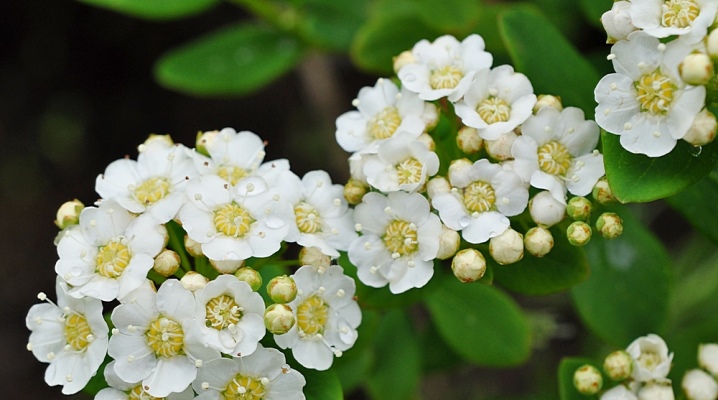
Fragrant snow-white bunches of Nipponskaya spirea evoke admiring glances and envious sighs from neighbors in the country who are staring at this gorgeous bush. However, there is nothing to envy: this beauty is unpretentious in care, and therefore you can settle her in any summer cottage. In order for the plant to please with abundant and long flowering, it is worth getting to know its features.
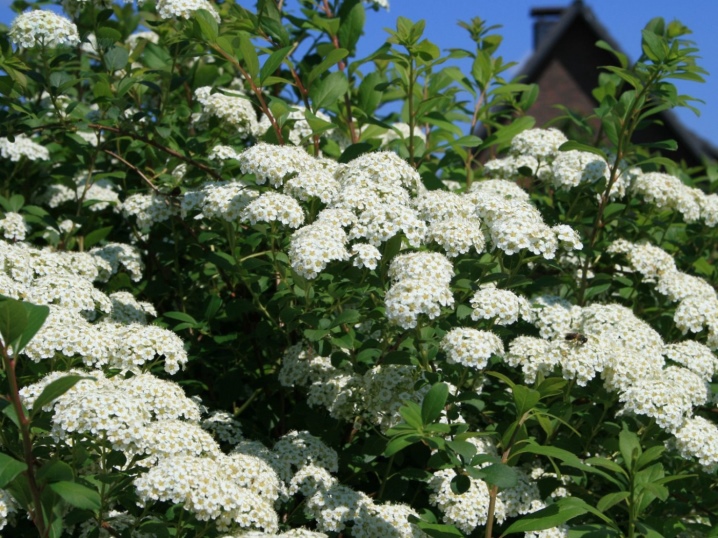
Peculiarities
Spirea Nippon came to Europe from the Japanese island of Shikoku. In the language of the historical homeland, its name sounds like "nippon". However, the name of the entire species of this shrub was given by the ancient Greeks. They noticed that the branches of the plant bend towards the ground, and the leaves on them are arranged in a spiral order. For this, the shrub became known as spiraea ("bend, spiral"). Nowadays, the plant is officially called the Nippon spirea, in which both names are combined.
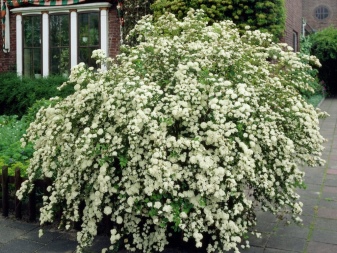
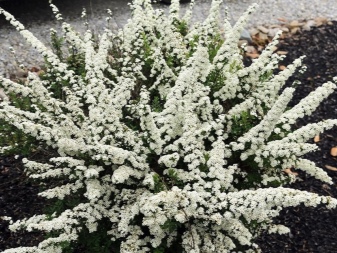
The scientific description of the nippon spirea is as follows.
The average height of the shrub is 1.5-2.5 meters. The plant reaches its peak of development in 10-20 years. The width options are the same as the height.
Branches are long, horizontal, arched. Oval leaves are alternately placed on them, the length of which is up to 4 cm.
The color of the leaves is dark green at the base and bluish green near the scalloped edging. In mid-November, the foliage becomes a deep red.
The shrub lives from 30 to 50 years.
Each year, the spirea grows 15-30 cm in height and width.
During the flowering period, the spirea is densely covered with spherical inflorescences (up to 8 cm in diameter). The flowers are small (only 8 mm in diameter). It is no coincidence that it is considered the best pollinator for fruit crops. Spirea is also a valuable source of pollen for bees and other pollinating insects.
Spirea blooms in the first month of summer and blooms for only 15-25 days. During flowering, the plant looks spectacular both close and at a distance.
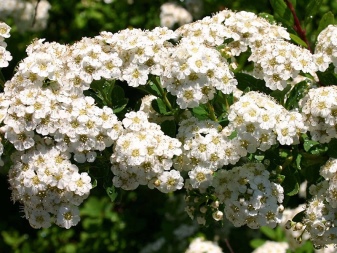
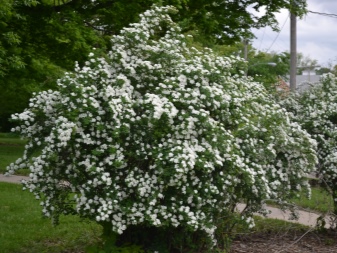
It should be noted that this plant is not demanding on soil conditions. Spirea is drought-resistant and blooms profusely in open sunny areas.
She is not afraid of frost, but snow drifts can disrupt the shape of the bush, therefore, for the winter, the spirea should be covered with a protective film or any other material.
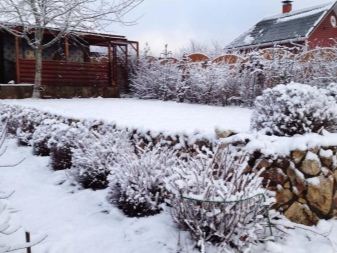
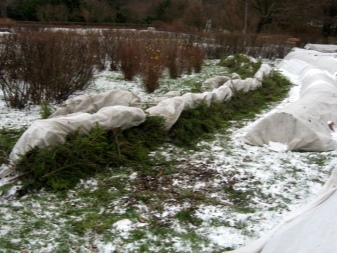
Varietal variety
Breeders have bred more than 100 varieties of spirea. However, only a few of them have become popular among amateur gardeners. It is worth getting to know the features of each species.
"Snumound" considered the most beautiful variety. Its business card is a spreading crown, densely covered with white flowers. The variety loves direct sunlight. A bright diffused light will also suit him, but if you find a place for this shrub under the sun, it will bloom especially luxuriantly and abundantly. When planting, the bushes should be planted at a distance of 50 cm. They observe a moderate watering regime and mulch the soil by sprinkling straw or sawdust on it. The plant can withstand frosts down to -30 degrees.
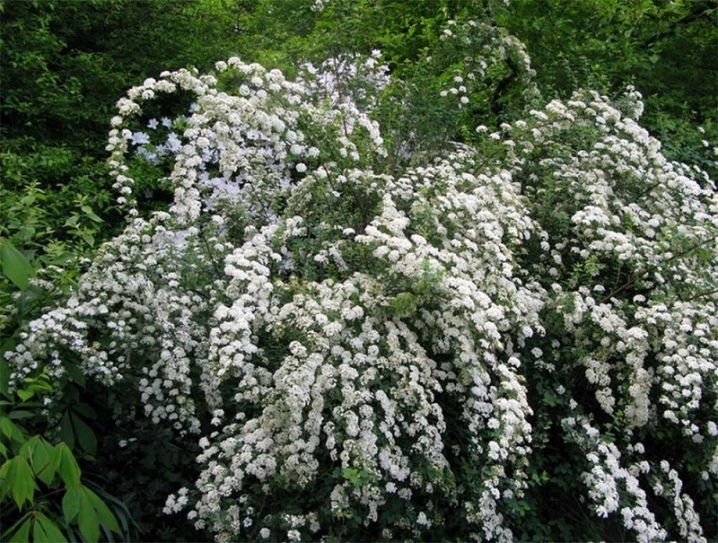
June Bride is a compact shrub of half a meter in width and height. A characteristic feature of June Bride is the ability of the leaves to maintain a dark olive color until the onset of frost. Frost-resistant, can withstand temperatures down to -25 degrees.
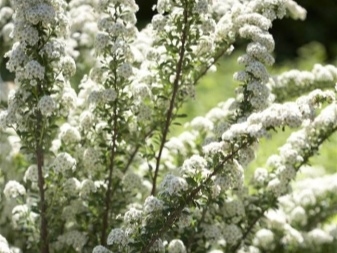
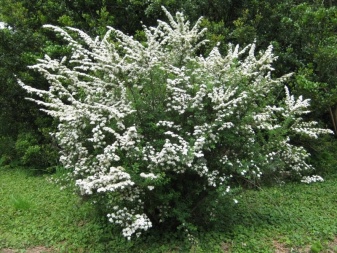
Halvard Silver is a low-growing shrub. The height of an adult plant does not exceed 1 meter, and the width reaches 1.5 meters.In late August, the dark green leaves of this variety turn copper-red. Halvard Silver loves slightly shaded and sunny locations. It should be planted in fertile, moist soil.
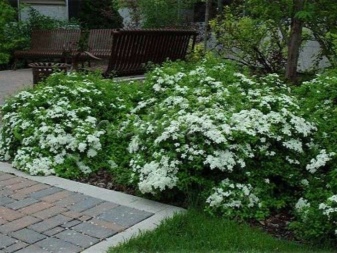

White Carpet is also a low growing variety. The height of the shrub does not exceed 80 cm. However, the low growth gives it a clear advantage in cold winters. The nearby White Carpet bushes resemble a white carpet, and this allows you to create unique flower arrangements

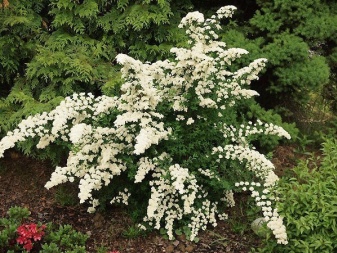
Gerlve's rainbow belongs to the so-called slow-growing shrubs: every year it grows only 10-15 cm. "Gelves Rainbow" is resistant to low temperatures. However, young shoots can freeze through. The plant recovers after removing weakened, dried out and non-viable shoots. The shrub is photophilous, resistant to fungal diseases and does not protect against pests.
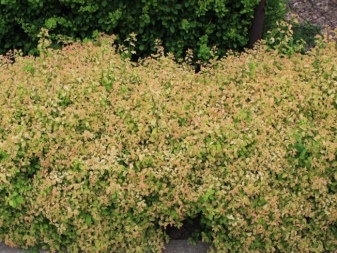
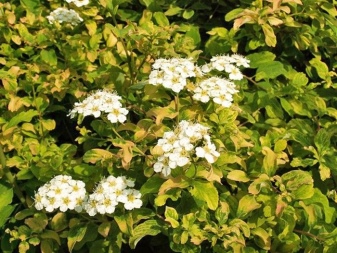
The listed varieties are simple and unpretentious to care for. But even such unpretentious plants should be given time and attention.
How to plant?
First of all, you should prepare the planting material. In other words, you need to buy a spirea seedling at a flower shop. The plant must be sold either in a container or with an earthen ball packed in a bag. Before buying, you should pay attention to the roots of the bush. The roots of young plants should be flexible and moist, without the slightest damage.

Ideally, they should be processed with a clay mash (a mixture of clay, water, ash and Kornevin). If during the inspection it turned out that the roots had sprouted through the drainage hole, it means that the cunning seller slipped an old bush that may not take root in the new conditions. Plants with rotten shoots on the roots are also discarded. Immediately before planting, the seedling is examined again, dried or broken roots are cut off with a sharp knife and the sections are processed with Kornevin.
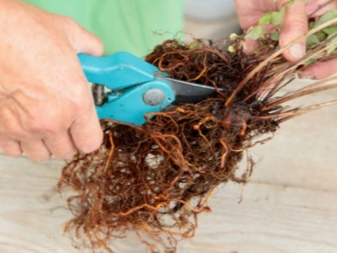

Then the shrub is placed in clean water for a couple of hours and begins to plant.
Planting is carried out in sunny or slightly shaded areas so that the plant develops in a comfortable environment. In this case, spirea should be planted in cloudy weather in spring or autumn.
Immediately before planting, you need to dig up the selected area and add sand and peat to the ground in a 1: 1 ratio.
The planting hole is made more rhizome. This is necessary to lay a 15 cm thick drainage layer on the bottom, which is covered with a layer of earth.
Spirea roots are laid on the prepared soil and gently straightened. After that, the plant is gradually covered with earth. Each layer is carefully trampled down so that an air cushion does not form.
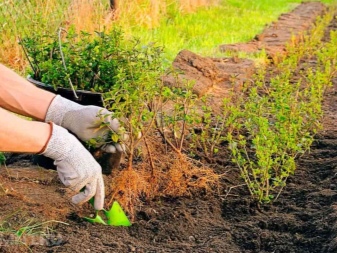

After planting, the plant should be watered abundantly, and the soil around it should be covered with straw or sawdust.
All other actions are aimed at maintaining its normal growth and decorative appearance.
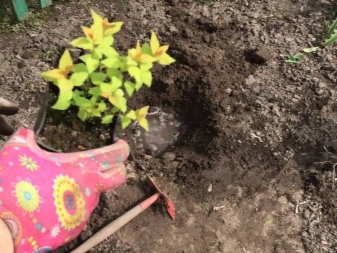

How to take care of it properly?
First of all, you should organize a regular watering regime. This is especially important for young plants that have not yet developed a strong root system. The shrub is unpretentious, but it does not tolerate drought well. Therefore, on hot days, spirea bushes should be irrigated 2-3 times a month at the rate of 15 liters of water per plant. After watering, the soil should be loosened and sprinkled with straw or sawdust.
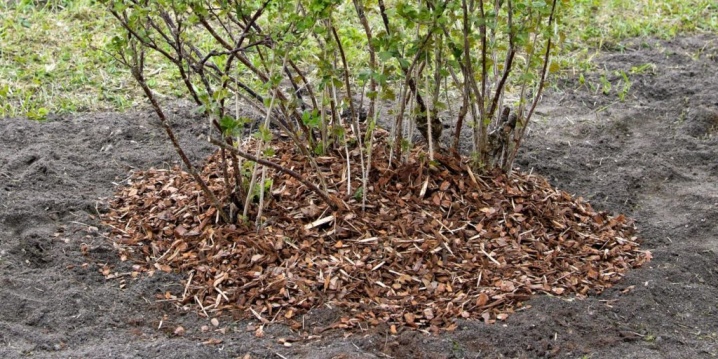
In order for the spirea to bloom profusely, it is fed three times per season. In the spring it is fed with nitrogenous fertilizers, in the summer - with organic matter, in the fall - with phosphorus-potassium fertilizers or wood ash. After the autumn feeding, the spirea begins to be prepared for wintering, covering it with any non-woven material, dry straw and leaves.
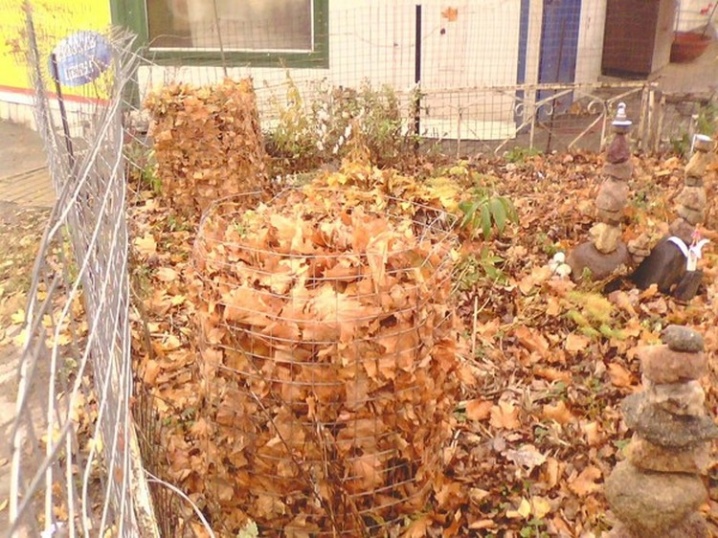
If the shrub grows in regions with harsh winters, it is insulated with spruce branches and plastic wrap.
In severe cold, part of the branches of the spirea freezes, with the onset of heat, the plant quickly recovers. However, after severe cold weather, you should not expect abundant flowering.
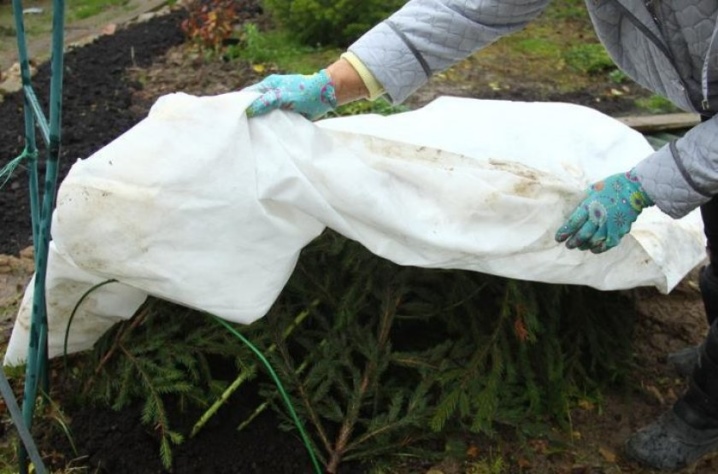
The spirea is regularly cut off: in the summer, faded branches are removed immediately after flowering, in the spring, frozen branches are removed, in the fall - weak and old shoots. Pruning allows you not only to shape, but also to rejuvenate the shrub. Once every 2 years, shoots that bloom poorly should be cut off, and once every 10 years, the shrub will completely get rid of old shoots.

Reproduction methods
There are several ways to reproduce nippon spirea. Amateur gardeners claim that the most difficult of these is the seed. Seedlings need conditions that are difficult to create in a city apartment. This is the coolness in the room, and the increased humidity of the air, and the timely moistening of the soil. It takes a long time, it is difficult, and you can hardly expect a positive result.
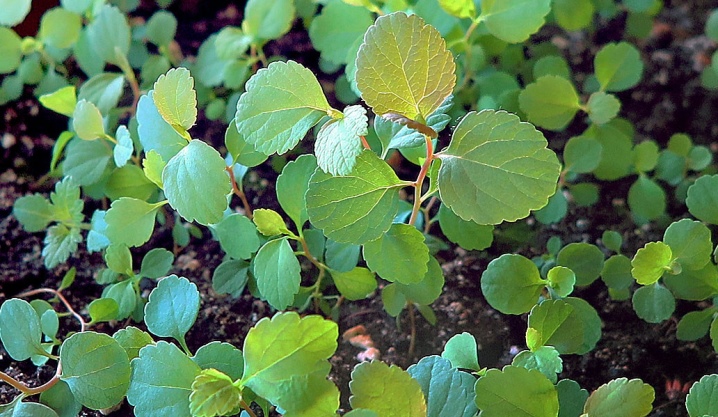
Experienced gardeners propagate the spirea by layering: they choose a healthy lower shoot, put it in a pre-dug trench and fix it with brackets so that only the top sticks out of the ground. The land around the future independent shrub is watered and sprinkled with straw. The next year, the branch develops a strong root system, and the gardener will have to separate it from the mother bush and transplant it to the chosen place.
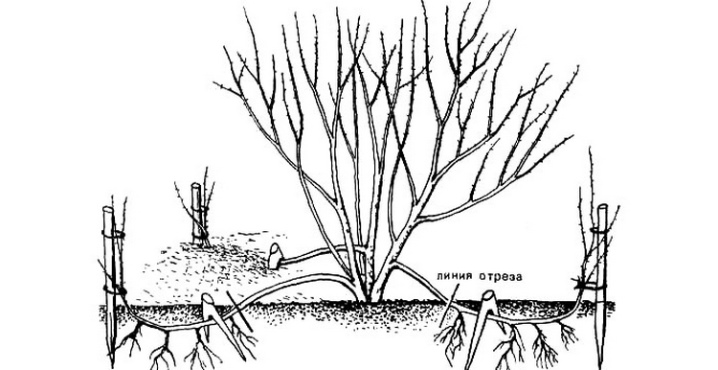
The division method is considered the easiest. The shrub is dug out of the ground, carefully divided into several parts and each part is transplanted to the selected area. However, the most popular method is cuttings. Even beginners can use it, but to achieve success, you need to do the following.
Cut the green annual cuttings 10-15 cm long.
Remove the lower leaves, cut the upper ones by half.
Plant the cutting in a separate container filled with wet sand. The stalk is planted at an acute angle.
Cover the container with a plastic bottle and place it on a brightly lit windowsill in a warm room.
When the cold comes, the cutting should be taken out to the balcony. It can also be left in the country. To prevent the plant from freezing, it should be covered with a double film or dry leaves.
When the ground warms up, the hardened cutting can be transplanted into the open ground at the chosen location.

A small life hack from experienced gardeners: the cutting takes root successfully if it is treated with Kornevin or Epin just before planting.
These drugs contribute to the formation of strong immunity, which allows the plant to resist diseases and pests.
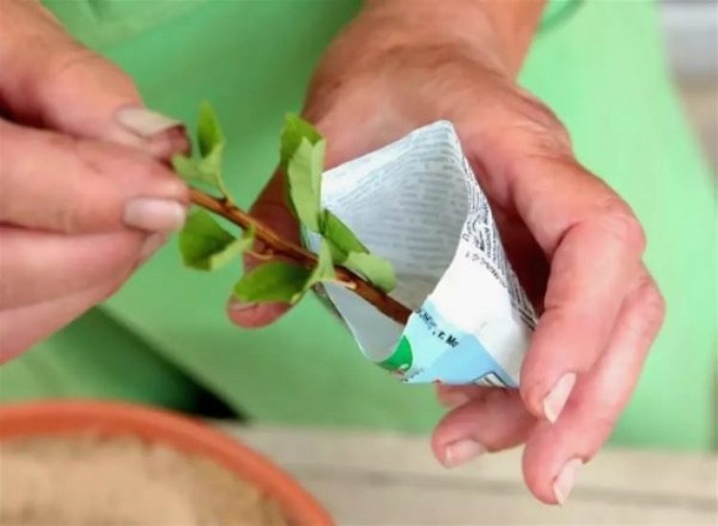
Diseases and pests
Spiraea nipponskaya is resistant to fungal diseases, but if you do not take any measures, it is easily attacked by pests. For example, in dry summers, the plant may suffer from an aphid or spider mite infestation. The first is easy to spot by whitish streaks on the leaves and small dark green dots. The second is recognized by a thin web. In any case, a plant left unattended loses its decorative appearance, the leaves turn yellow, dry and fall off. "Fusalon", "Fusfamid" and "Metaphos" help to get rid of uninvited guests.

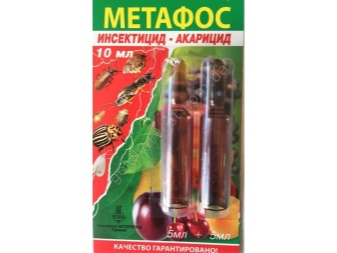
It is not uncommon for chic spirea bushes to attack the caterpillars of the blue meadow sawfly. They pounce on buds, young leaves and young shoots with appetite. If the plant is not treated, the pest will completely destroy it. The drug "Decis" helps to get rid of the "uninvited guest". For prevention purposes, you should regularly inspect the bush, spray it with a solution of laundry soap or a weak solution of potassium permanganate. It is best to carry out water treatments with warm water and wash the inside and outside of the foliage. Then the parasites will understand that they are not welcome here and will stay away from the unpalatable plant.
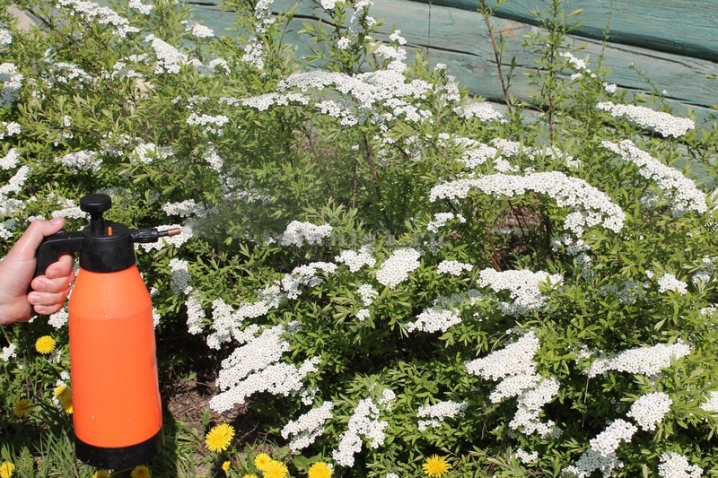
Use in landscape design
Spirea Nipponskaya is planted in parks and squares, it is planted with greenery for children and sports grounds. In summer cottages, it is planted in flower beds: someone makes a single planting, someone creates complex flower arrangements, someone equips alpine slides.Spirea bushes are used as framing garden paths or hedges. The use of nipponskaya spirea in landscape design largely depends on the area of the summer cottage, so it is worth looking at the most successful ideas.
A striking example of a single planting of the Nippon spirea. An empty piece of land is filled with a gorgeous flowering bush. In the background are spruce and cypress. This is a beautiful solution, an organic combination and the best option for any suburban area.

Another option for a single landing. The owner did not bother with the arrangement of a complex flower garden, but arranged a fence made of intertwined rods. Made simple, looks exquisite.

Inconspicuous plants, and in the very center - luxurious spirea flowers. Even after flowering, the alpine slide will not lose its chic. An interesting solution for spacious country houses.
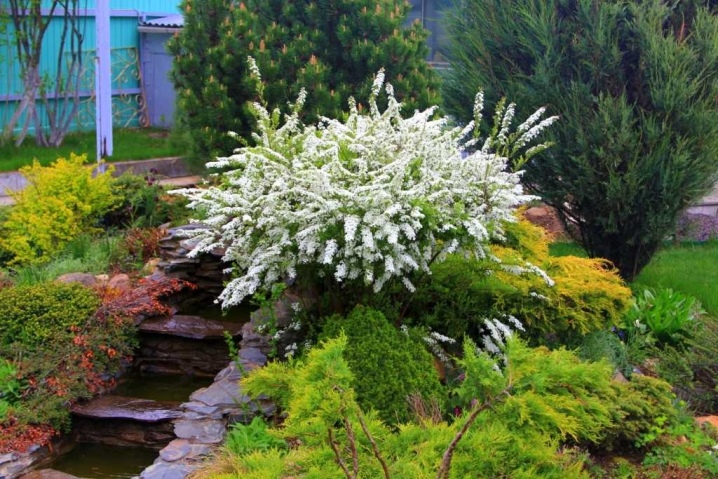
An example of the use of nipponskaya spirea as a border. Simple and sophisticated. This is a universal solution for decorating paths in the country or in a country house.
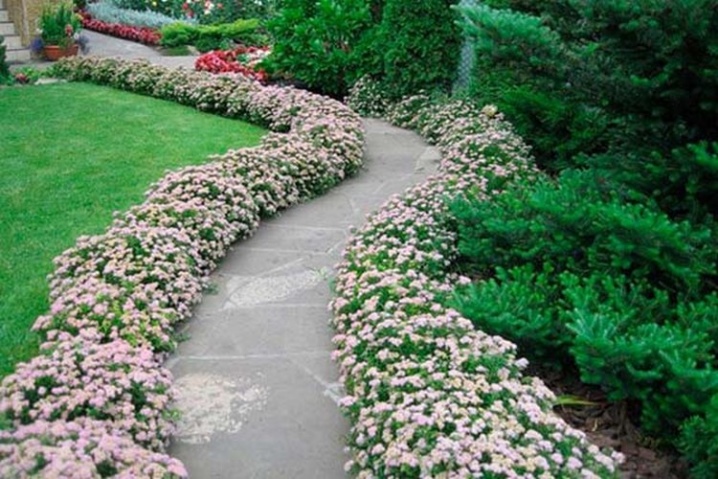
A hedge of spirea thickets will hide the area from prying eyes. Everyone will win: the owners will enjoy a well-deserved rest, and passers-by will admire the beauty of flowering plants.
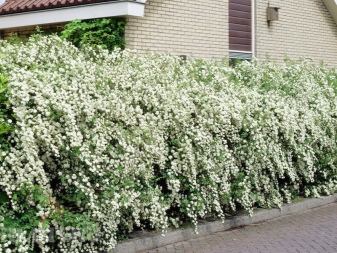
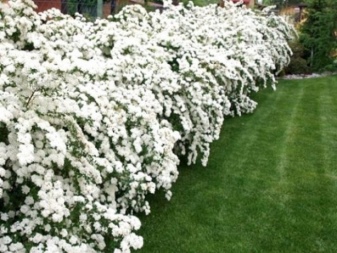
For planting and caring for the spirea, see the next video.



































































The comment was sent successfully.